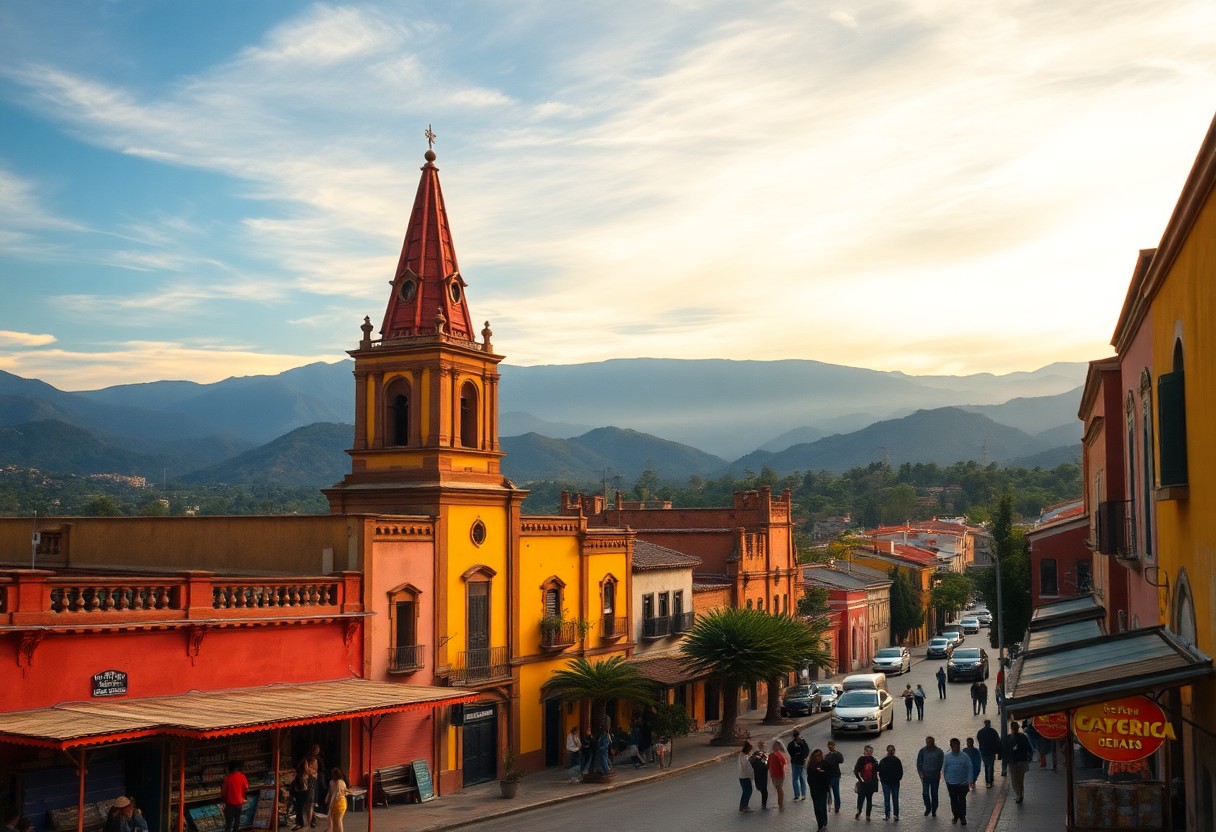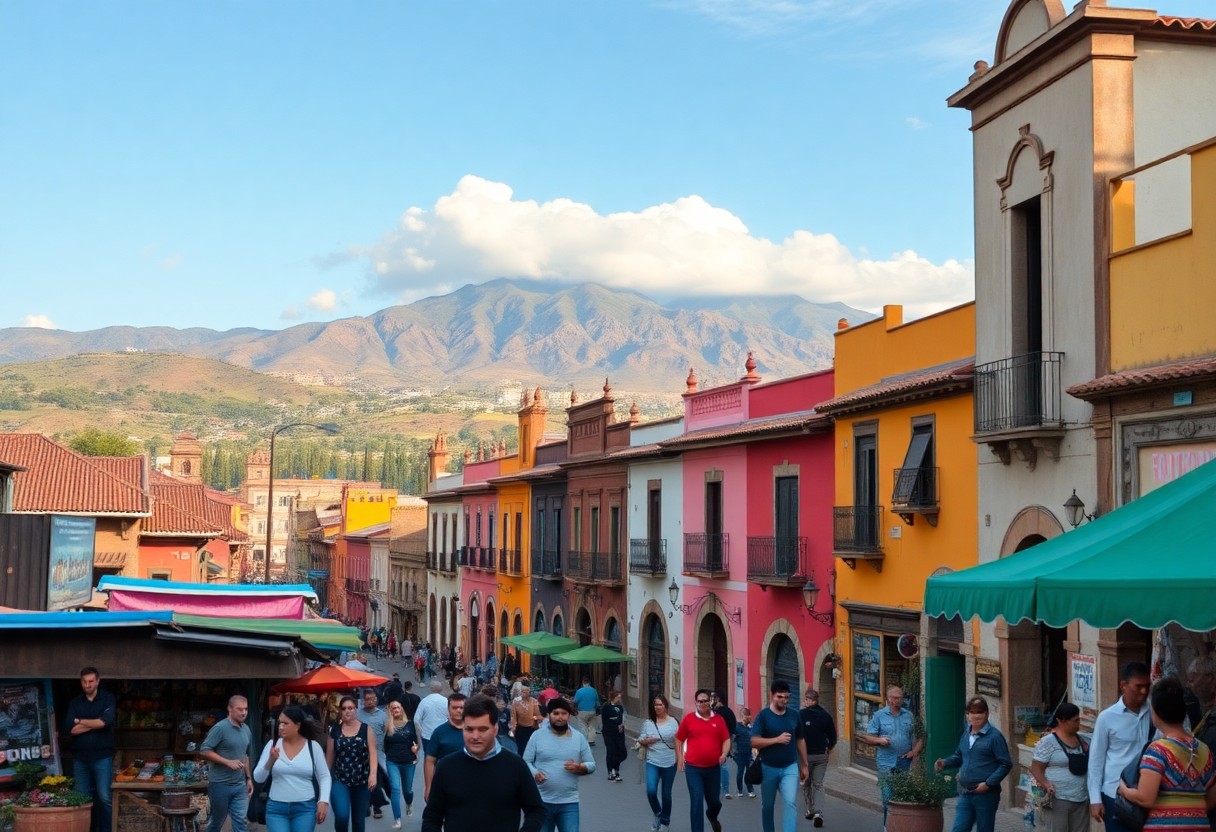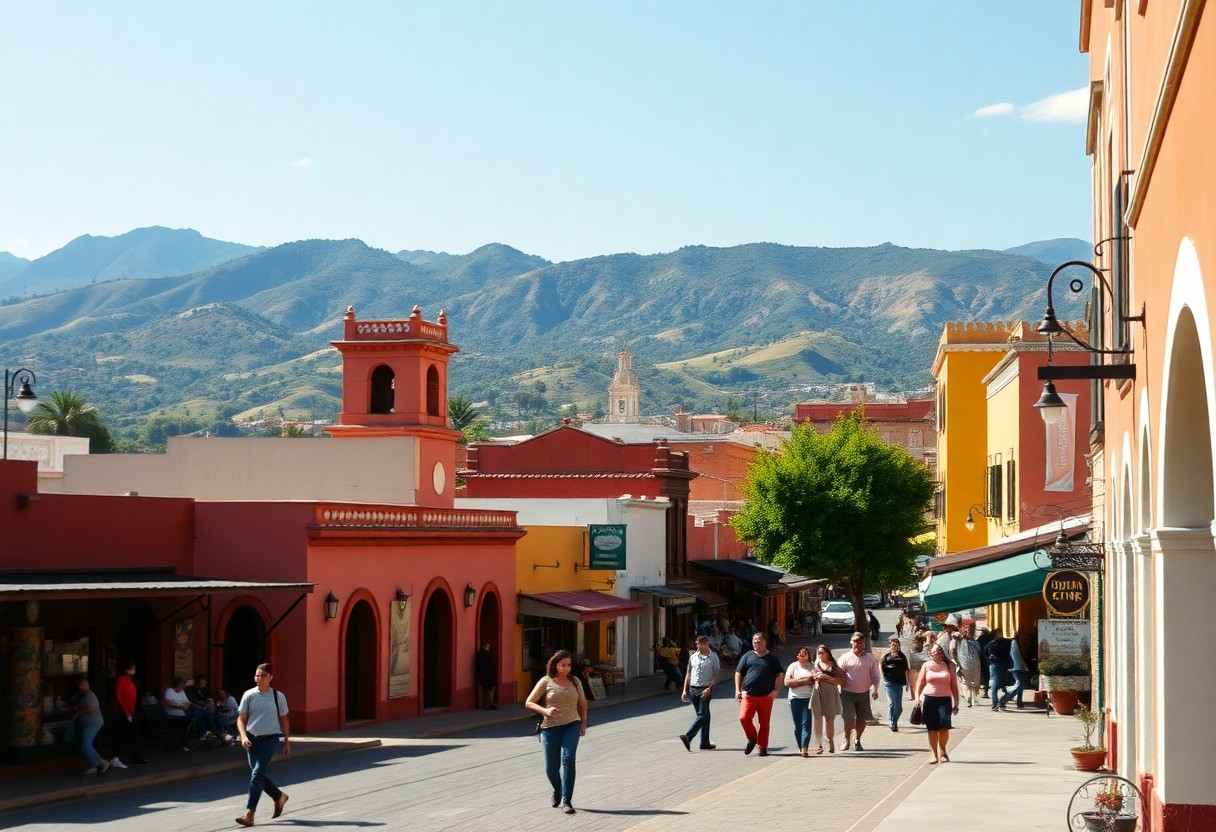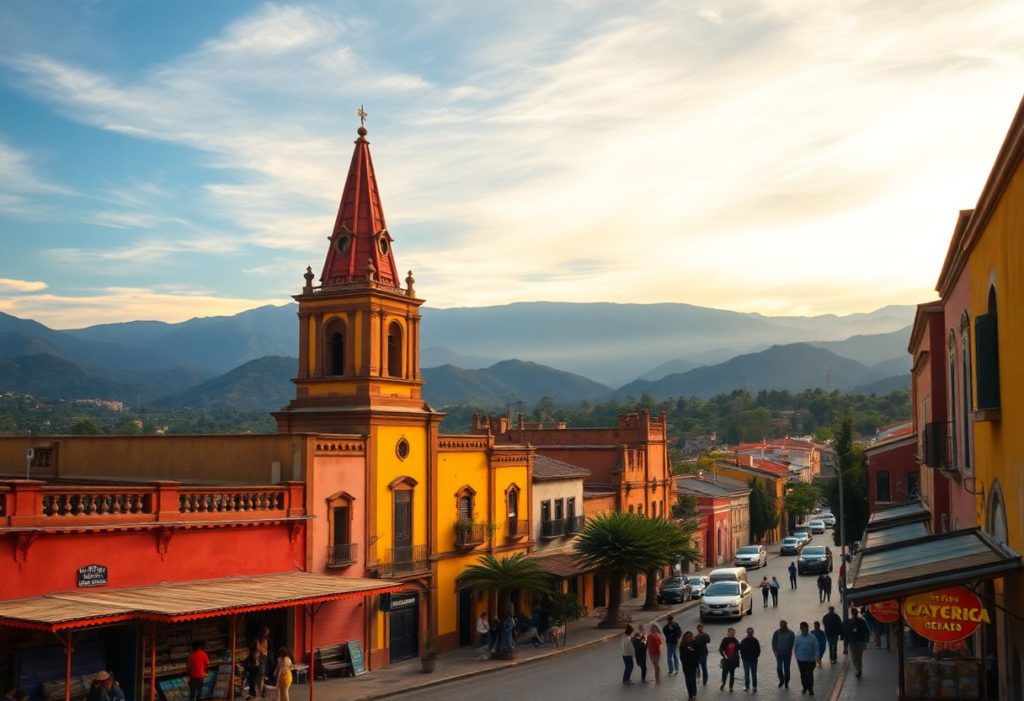Essential Travel Tips for Successfully Adjusting to the High Elevation of San Miguel de Allende: Begin by Acknowledging Its 4,593-Foot Altitude. Upon your arrival in this picturesque city, you might face initial challenges such as shortness of breath and mild altitude sickness. Your body needs time to acclimatize, making it crucial to plan for slower movements and ensure extra hydration. While the high-elevation backdrop offers remarkable advantages—like cooler climates and stunning panoramic views—it also requires thorough preparation. Be sure to drink plenty of water, refrain from alcohol during your first few days, and listen to your body’s signals. If you have pre-existing health issues, consulting your physician before traveling is advisable to ensure a safe and enjoyable experience in this breathtaking Mexican highland locale.
 Here’s the content for your blog post section:
Here’s the content for your blog post section:
Maximize Your Travel Experience by Understanding the Altitude of San Miguel de Allende
The captivating colonial city of San Miguel de Allende is situated at a high elevation in the heart of Mexico’s central highlands. Located in the state of Guanajuato, this distinctive geographical position greatly impacts your travel experience. Its elevated setting not only affords you breathtaking panoramic views but also provides a unique climate that sets it apart from other Mexican destinations.
Understanding the Exact Elevation of San Miguel de Allende: Key Information for Travelers
Before embarking on your journey, it is essential to comprehend that San Miguel de Allende sits at an impressive approximately 6,132 feet (1,870 meters) above sea level. This notable elevation requires you to be prepared for potential altitude-related effects on your body, such as mild breathlessness or slight fatigue during your initial days in the city.
Exploring the Historical Significance of San Miguel de Allende’s Elevated Location
Founded in 1542, the elevated site of San Miguel was strategically chosen for its defensive advantages and proximity to rich silver mining regions. The altitude provided natural protection and economic opportunities for early Spanish settlers. Furthermore, San Miguel’s elevation has been pivotal in shaping its historical trajectory. The city’s high position influenced its architectural styles, agricultural practices, and cultural evolution. Both indigenous peoples and Spanish colonizers had to adapt to the challenges posed by the terrain, creating a unique urban landscape that endures today. Additionally, the high elevation has helped to preserve the city’s colonial charm, shielding it from extensive modernization throughout various historical periods.
Gain Insight into the Effects of High Altitude on Your Body
If you’re traveling to San Miguel de Allende, renowned for its elevation of 6,200 feet, you will experience significant atmospheric changes that can impact your body. The thinner air and reduced oxygen levels create physiological challenges, potentially resulting in mild to moderate altitude-related responses. Your physical performance and overall comfort may be temporarily affected as your body adjusts to this elevated environment.
Understanding Altitude Sickness: Symptoms and Implications for Travelers
While visiting San Miguel de Allende, altitude sickness could become a significant concern. This condition occurs when you ascend quickly to higher elevations, challenging your body’s ability to acclimatize. Both your respiratory and cardiovascular systems will need to work harder to compensate for the reduced oxygen pressure, which may trigger various physiological responses.
Identifying Symptoms of Altitude Sickness and Understanding Who Is at Risk
Approximately 20% of travelers report experiencing altitude-related symptoms when visiting elevated destinations like San Miguel. People of all ages and fitness levels may be vulnerable, with no guaranteed immunity based solely on physical condition. Your personal susceptibility to altitude sickness can be influenced by genetic factors, ascent pace, and individual physiological responses.
A comprehensive understanding of altitude sickness reveals that symptoms can vary from mild discomfort to serious health risks. Factors such as age, pre-existing health conditions, and overall fitness significantly impact your adaptation. Younger travelers might experience more intense symptoms, while older individuals could face subtler physiological reactions. It is essential to seek immediate medical attention if symptoms worsen, especially if severe headaches, persistent dizziness, or breathing difficulties occur.
 Here’s the content for the sections you requested:
Here’s the content for the sections you requested:
Effective Strategies for Coping with High Altitude Travel
It’s well known that San Miguel de Allende’s elevation of 6,200 feet can significantly affect your travel experience. You must be prepared to handle potential altitude-related challenges. The thinner air can influence your body differently than at lower elevations, potentially leading to fatigue, shortness of breath, and mild discomfort. Understanding how to manage these effects will enhance your enjoyment of this stunning colonial city.
Proactive Measures to Prevent Altitude Sickness
Altitude sickness can significantly derail your travel plans, making it crucial to take proactive measures. You should:
- Stay well-hydrated by drinking plenty of water
- Avoid alcohol and caffeine during your initial days
- Choose light, nutritious meals
- Take it slow during your first days in San Miguel
Being able to recognize early symptoms can play a significant role in preventing more severe complications.
Gradual Acclimatization Techniques for a Comfortable Stay
Considering San Miguel de Allende’s high elevation, it is wise to arrive with a well-thought-out plan. Dedicate your first day to relaxation, minimizing physical exertion, and allowing your body the necessary time to adjust to the new altitude conditions.
In fact, proper acclimatization is not just advisable; it’s a vital strategy for an enjoyable visit. Organize your itinerary to include rest periods, avoid strenuous activities during the initial 24-48 hours, and pay attention to your body’s cues. Gentle walking, maintaining hydration, and consuming light meals can greatly aid your body in adapting to the higher elevation.

Essential Packing Strategies for Altitude Comfort
As you prepare for your journey to San Miguel de Allende, understanding how to pack for its high elevation of 6,200 feet is crucial. Your choice of clothing and equipment can significantly affect your comfort and adaptation to the altitude. Thoughtful packing will help you address potential challenges and enhance your experience in this enchanting Mexican destination.
Important Clothing and Gear for High-Altitude Travel
When selecting clothing, focus on layering strategies to effectively manage temperature variations at high altitudes. Pack lightweight, breathable fabrics that can be easily layered as needed. Include a lightweight jacket, thermal underwear, and moisture-wicking shirts. Don’t forget comfortable walking shoes with good traction, essential for navigating the charming yet uneven cobblestone streets of San Miguel.
Essential Medications and Supplements for Altitude Preparedness
At high elevations, your body requires specific preparations. Consult your healthcare provider about altitude sickness prevention strategies. Consider bringing acetazolamide (Diamox) to assist your body in acclimatizing more rapidly. Ibuprofen can help relieve potential headaches, and maintaining hydration is critical.
The impact of altitude on your health can vary significantly. Altitude sickness can affect anyone, regardless of fitness level. Symptoms may include headaches, fatigue, dizziness, and shortness of breath. Some travelers might experience more severe reactions, making it essential to monitor your body’s responses. Gradual acclimatization, staying hydrated, and avoiding alcohol during the initial days can substantially reduce risks.
Here’s the content for the chapter on Hydration and Health Tips:
Crucial Hydration and Health Guidelines for San Miguel de Allende
Your journey to San Miguel de Allende necessitates careful attention to altitude-related health considerations. At 6,200 feet above sea level, the city requires specific health precautions. Keep these vital tips in mind:
- Drink an ample amount of water
- Consistently monitor your hydration levels
- Appropriately pace your physical activities
- Stay vigilant for signs of altitude sickness
Remember that your body will require adequate time to adjust to the elevated environment.
The Critical Importance of Maintaining Hydration
Any elevation above 5,000 feet can profoundly impact your body’s hydration needs. San Miguel de Allende’s altitude increases your risk of dehydration and altitude-related symptoms. Your respiratory and cardiovascular systems will work harder, leading to faster fluid loss. Drinking enough water is vital to preventing possible health complications and ensuring a more enjoyable travel experience.
Foods and Beverages That Support High Altitude Adaptation
Here are some recommended items that can aid your body’s adaptation to high altitude:
- Herbal teas for hydration
- Electrolyte-rich drinks to maintain balance
- Hydrating fruits such as watermelon and oranges
- Soups and broths for nourishment
A deeper exploration of nutrition reveals specific foods that are beneficial for altitude adjustment. Coca tea, popular in high-altitude regions, can alleviate altitude-related discomfort. Bananas, rich in potassium, help maintain electrolyte balance. Avoid excessive alcohol and caffeine, as these can contribute to dehydration. Eating light, easily digestible meals will also assist your body in acclimatizing more effectively.
Embarking on Adventures in San Miguel de Allende at High Altitude
Once again, you will find San Miguel de Allende perched at an impressive 6,200 feet above sea level, presenting unique challenges and enriching experiences for visitors. Your body will take time to adjust to the elevation, which may impact your energy levels and overall comfort. The thin mountain air means oxygen is less dense, potentially leading to altitude-related symptoms such as mild headaches or fatigue. Staying hydrated, moving at a leisurely pace, and allowing yourself ample time to acclimate will help you fully enjoy this beautiful highland destination.
Engaging in Outdoor Activities: Safety Considerations at High Altitude
During your high-altitude adventure, it’s essential to approach physical activities with caution. Walking and hiking may feel more strenuous due to reduced oxygen levels. You should pace yourself, take regular breaks, and pay close attention to your body’s signals. Engaging in light exercise and gradual movements will facilitate your body’s adaptation. Wearing comfortable clothing, staying well-hydrated, and avoiding overexertion are key strategies to ensure you safely enjoy San Miguel’s breathtaking outdoor environments.
Accessibility of Local Attractions in San Miguel de Allende
As you wander through San Miguel’s historic streets, you’ll notice that most attractions are accessible, although the city’s steep cobblestone streets can pose challenges. Your exploration may require careful walking and possibly the use of supportive walking aids. Many churches, museums, and galleries are accessible, but you should prepare for occasional uneven terrain and elevation changes that could test your mobility.
Another important consideration for your visit is recognizing how high altitude affects different attractions. The El Jardín principal and major historical sites are generally accessible, but you may need to plan for more frequent rest stops. Some museums, such as the Museo Nacional de la Muerte and the Instituto Allende, offer relatively flat access, making them excellent choices for visitors still acclimating to the elevation. Consider organizing your daily itinerary to include strategic breaks and maintaining a leisurely pace to fully appreciate San Miguel’s rich cultural offerings.
Key Takeaways for Exploring San Miguel de Allende
In summary, San Miguel de Allende’s elevation of 6,200 feet necessitates thoughtful preparation. Your health and comfort depend on understanding the effects of altitude, so it’s crucial to hydrate adequately, pace your activities, and allow time for acclimatization. Be sure to pack appropriate clothing for temperature variations and consider altitude sickness prevention strategies. By staying informed and attentive to your body’s signals, you can enhance your enjoyment of this stunning colonial city. Your proactive approach will turn potential challenges into a rewarding travel experience, ensuring you fully appreciate San Miguel de Allende’s unique charm and cultural richness.
Common Questions Regarding San Miguel de Allende’s Altitude
Q: What is the altitude of San Miguel de Allende, and how does it impact travelers?
A: San Miguel de Allende is situated at approximately 6,200 feet (1,890 meters) above sea level. This elevated location can lead to altitude-related challenges, such as shortness of breath, mild headaches, and decreased physical endurance for visitors unaccustomed to high-altitude environments. Travelers should anticipate gradual activity levels and ensure they stay well-hydrated during their initial days in the city.
Q: What health precautions should visitors take when exploring San Miguel de Allende at high altitude?
A: Visitors should consume plenty of water—around 2-3 liters daily—to prevent dehydration associated with high altitude. Engaging in light, gradual physical activities will promote acclimatization. Travelers may also benefit from drinking coca tea or taking mild altitude sickness prevention supplements. Individuals with pre-existing respiratory or cardiovascular conditions should consult their healthcare provider before traveling to San Miguel de Allende.
Q: What are the best strategies for enjoying San Miguel de Allende while adapting to its high-altitude environment?
A: Successfully navigating high altitude in San Miguel involves strategic planning. Visitors should schedule rest periods, avoid excessive alcohol consumption, and focus on light, nutritious meals. Walking slowly, taking frequent breaks, and listening to one’s body are crucial for a comfortable experience. Lightweight, breathable clothing and comfortable walking shoes will enhance mobility and comfort while exploring this beautiful colonial city.
The Article: Understanding San Miguel de Allende’s High Altitude: Important Travel Tips appeared first on https://fallinginlovewithsanmiguel.com/
The Article San Miguel de Allende’s High Altitude: Essential Travel Tips Was Found On https://limitsofstrategy.com



Your insights on adjusting to high altitudes resonate deeply with my experiences while traveling. I vividly recall visiting another high-elevation city, La Paz, Bolivia, where I experienced that overwhelming shortness of breath upon arrival. It’s fascinating how our bodies react to changes in altitude and how crucial it is to respect those signals.
I completely relate to your experience in La Paz. The way our bodies respond to higher altitudes can be surprising and sometimes alarming. It’s interesting how so many of us push through that initial discomfort without fully understanding what’s happening.
“Your experience in La Paz is a perfect example of our bodies’ remarkable adaptability! If you’re interested in learning more about acclimatization strategies for high altitudes, check out this helpful resource.”
https://aslicklook.co.uk/trustindex
I can relate to your experience in La Paz. The shortness of breath can catch you off guard, especially when you first step off the plane and feel that thin air hit you. It’s intriguing how our bodies respond not just physically but also psychologically in these high-altitude environments. It’s almost like a reminder of our own vulnerabilities.
I can relate to your experience with altitude; it made me appreciate the importance of preparing for high-elevation travel, especially after reading some insightful tips for visiting places like San Miguel de Allende.
‘Essential Facts for Visiting San Miguel de Allende’
https://aslicklook.co.uk/essential-facts-for-visiting-san-miguel-de-allende/.
Your experience in La Paz really highlights the unique challenges that come with high-altitude travel. The shortness of breath can be unsettling, and many people find that it can sneak up on them, especially in places that are significantly higher than they’re accustomed to. It’s interesting to consider how the body’s acclimatization process works; it’s not just about adjusting to lower oxygen levels, but also about how our bodies adapt to the physical demands of the environment.